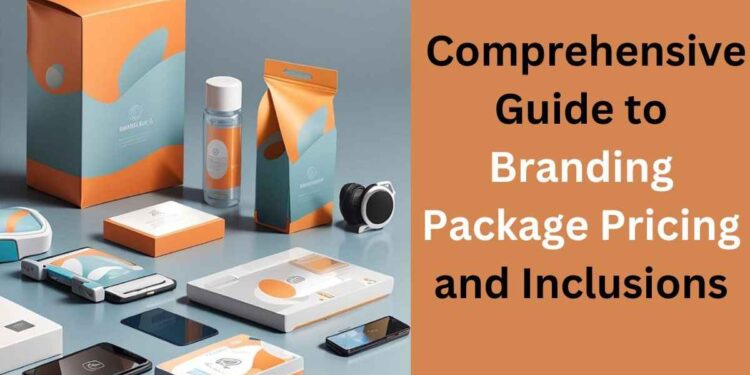When it comes to building a successful business, branding plays a crucial role. Your brand is the face of your company, the first impression that potential customers have of your products or services. It embodies your principles, vision, and distinctive value proposition. Effective branding can set you apart from the competition and create a lasting connection with your target audience.
What is a Branding Package?
A branding package is a comprehensive set of services and materials designed to establish and enhance your brand identity. It typically includes elements such as logo design, color palette selection, typography, brand guidelines, and marketing collateral. A branding package provides consistency and cohesiveness across all your brand touchpoints, ensuring that your brand message is conveyed effectively. Craft your brand’s identity with bespoke logo designs from Designviva. Elevate your visual presence with our custom logo design services tailored to your unique vision and brand essence.
Benefits of Investing in a Branding Package
Investing in a branding package offers numerous benefits for your business. Firstly, it helps you establish a strong brand identity that resonates with your target audience. A well-designed logo and consistent visual elements create brand recognition and build trust among customers. Consequently, this results in heightened brand allegiance and enhanced customer retention.
Secondly, a branding package helps differentiate your business from competitors. By defining your unique selling proposition and communicating it effectively through your branding, you can position yourself as the preferred choice in your industry. This can lead to a higher perceived value of your products or services and allow you to command premium pricing.
Lastly, a branding package sets the foundation for all your marketing efforts. By having a set of brand guidelines and marketing collateral, you can maintain consistency across all your marketing channels, whether it’s your website, social media, or print materials. This consistency strengthens your brand message and increases brand recall.
Factors that Influence Branding Package Pricing
The pricing of branding packages can vary significantly depending on several factors. One of the primary factors is the complexity of the project. If you require extensive research, strategy development, and multiple design iterations, the pricing will be higher compared to a simpler branding package.
Another factor is the level of customization. Off-the-shelf branding packages are generally more affordable, as they involve minimal customization. On the other hand, custom branding packages, where the design and strategy are tailored specifically to your business, tend to be more expensive but offer a higher level of uniqueness.
The reputation and experience of the branding agency or designer also play a role in pricing. Established agencies with a track record of successful branding projects often charge higher fees. However, it’s important to consider the value they bring and the potential return on investment from a well-executed branding package.
Inclusions Commonly Found in Branding Packages
Branding packages typically include a range of services and deliverables to establish and enhance your brand identity. Some of the common inclusions are:
Logo Design – The creation of a unique and memorable logo that represents your brand visually.
Color Palette Selection: The selection of a cohesive color scheme that aligns with your brand’s personality and evokes the desired emotions.
Typography: The choice of fonts that reflect your brand’s tone and enhance legibility across various mediums.
Brand Guidelines: A comprehensive document that outlines how your brand should be used and represented consistently across all platforms.
Marketing Collateral: The development of essential marketing materials such as business cards, letterheads, brochures, and social media graphics.
Website Design: The creation of a visually appealing and user-friendly website that reflects your brand’s identity and provides a seamless user experience.
Brand Strategy: The development of a strategic plan to position your brand effectively in the market and differentiate it from competitors.
Choosing the Right Branding Package for Your Business
When selecting a branding package for your business, it’s essential to consider your specific needs and goals. Start by assessing the current state of your brand and identifying areas that require improvement or refinement. Identify your intended audience and the message you aim to communicate.
Research various branding agencies or designers and review their portfolios and client testimonials. Look for a provider that has experience in your industry and understands your target audience. Request detailed proposals from multiple providers and compare their offerings, pricing, and the level of customization they can provide.
It’s also crucial to consider the scalability of the branding package. As your business grows, your branding needs may evolve, so ensure that the package you choose allows for future expansion and adaptation.
Elevate your brand’s identity with custom branding designs by Designviva. Stand out in your market with our tailored branding solutions crafted to reflect your unique vision and values.
Custom Branding Packages
While off-the-shelf branding packages offer convenience and affordability, custom branding packages provide a higher level of personalization and uniqueness. With a custom branding package, the designer or agency works closely with you to understand your brand’s essence, values, and goals. They develop a tailored strategy and design elements that align perfectly with your business.
Custom branding packages often involve a more in-depth discovery process, extensive research, and more iterations to ensure the final result captures the essence of your brand accurately. While they may be more expensive, they offer a higher level of exclusivity and can help your brand stand out in a crowded market.
Finding a Branding Package that Suits Your Budget
Brand packages come in various price ranges, and it’s essential to find one that suits your budget without compromising quality. Start by setting a realistic budget for your branding project. Consider the potential return on investment and the long-term benefits of a well-executed branding package.
When reviewing proposals, pay attention to the level of customization offered within your budget. While you may not be able to afford a fully custom branding package, look for providers that offer customization options within their pre-packaged offerings. This allows you to add a personal touch to your branding without breaking the bank.
It’s also worth considering the reputation and experience of the branding agency or designer. While cheaper options may be tempting, they may lack the expertise and track record to deliver a high-quality branding package. Balance your budget constraints with the value and expertise the provider can bring to your project.
Tips for Maximizing the Value of Your Branding Package
Once you’ve invested in a branding package, it’s important to maximize its value by leveraging it effectively. Here are a few tips to get the most out of your branding investment:
Consistency is key: Ensure that your brand guidelines are followed consistently across all platforms and touchpoints. This includes your website, social media profiles, marketing materials, and customer interactions.
Use your branding to tell your story: Your branding elements should reflect your brand’s story, values, and unique selling proposition. Incorporate your brand messaging into your marketing campaigns and customer communications to create a cohesive brand experience.
Engage your employees: Educate your employees about your brand identity and how it should be represented. They are your brand ambassadors and should be aligned with your brand values and messaging.
Monitor and adapt: Regularly review your branding efforts and assess their impact. Gather feedback from customers and make necessary adjustments to ensure your branding continues to resonate with your target audience.
Conclusion
Investing in a branding package is a significant step towards building a strong and recognizable brand. By understanding the importance of branding, selecting the right package for your business, and maximizing its value, you can unlock the secrets to a successful brand identity. Remember, your brand is an investment that can yield long-term benefits, so choose wisely and make the most of your branding journey.
Ready to take your brand to the next level? Contact us today to discuss our custom branding packages and how they can help your business succeed.







